Themed collection Editor’s Choice: Single-atom and nanocluster catalysis

Precisely modulating the surface sites on atomically monodispersed gold-based nanoclusters for controlling their catalytic performances
The catalytic properties of atomically precise gold-based nanoclusters can be tailored by precisely modulating the surface sites on the nanoclusters.

Nanoscale, 2020,12, 18004-18012
https://doi.org/10.1039/D0NR04871B
A perspective on oxide-supported single-atom catalysts
To explore oxide-supported single-atom catalysts (SACs) at the atomic level, a recently developed surface free energy approach may help fabricate well-defined SACs to tackle some key issues in the future.

Nanoscale Adv., 2020,2, 3624-3631
https://doi.org/10.1039/D0NA00393J
Engineering ultrasmall metal nanoclusters for photocatalytic and electrocatalytic applications
The many fundamental properties of ultrasmall noble metal nanoclusters have made it increasingly clear that they possess enormous potential for photo- and electro-catalytic applications due to their unique electronic and optical properties.

Nanoscale, 2019,11, 20437-20448
https://doi.org/10.1039/C9NR07272A
Heterogeneous gold catalysts for selective hydrogenation: from nanoparticles to atomically precise nanoclusters
Gold nanocatalysts with different sizes (nanoparticles and nanoclusters) show different catalytic performances for various selective hydrogenation reactions.
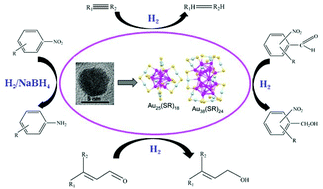
Nanoscale, 2019,11, 11429-11436
https://doi.org/10.1039/C9NR03182K
Activation of atom-precise clusters for catalysis
This review details methods used to activate Au and Ag clusters for catalysis and routes that have been effective in mitigating sintering.

Nanoscale Adv., 2020,2, 55-69
https://doi.org/10.1039/C9NA00549H
Photo/electrocatalysis and photosensitization using metal nanoclusters for green energy and medical applications
This review summarizes recent developments in the photo/electro catalytic and photosensitizing characteristics of metal and alloy NCs for green energy and medical applications.

Nanoscale Adv., 2020,2, 17-36
https://doi.org/10.1039/C9NA00583H
An overview on the current understanding of the photophysical properties of metal nanoclusters and their potential applications
Photophysics of atomically precise metal nanoclusters (MNCs) is an emerging area of research due to their potential applications in optoelectronics, photovoltaics, sensing, bio-imaging and catalysis.
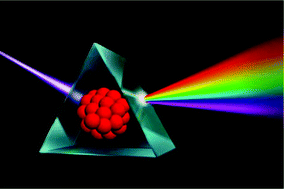
Nanoscale, 2019,11, 22685-22723
https://doi.org/10.1039/C9NR07963G
Design of atomically dispersed catalytic sites for photocatalytic CO2 reduction
This Minireview highlights recent key developments of atomically dispersed catalytic sites for photocatalytic CO2 reduction and elucidates the common fundamentals behind various materials systems.

Nanoscale, 2019,11, 11064-11070
https://doi.org/10.1039/C9NR03616D
The role of ligands in atomically precise nanocluster-catalyzed CO2 electrochemical reduction
S/Se atoms at the metal–ligand interface can play an important role in determining the overall electrocatalytic performance of Au nanoclusters.

Nanoscale, 2021,13, 2333-2337
https://doi.org/10.1039/D0NR07832H
Ligand-free gold nanoclusters confined in mesoporous silica nanoparticles for styrene epoxidation
We present a novel approach to produce gold nanoclusters (Au NCs) in the pores of mesoporous silica nanoparticles (MSNs) by sequential and controlled addition of metal ions and reducing agents.

Nanoscale Adv., 2020,2, 1437-1442
https://doi.org/10.1039/C9NA00781D
The atomic origin of nickel-doping-induced catalytic enhancement in MoS2 for electrochemical hydrogen production
The HER performance of MoS2 is enhanced dramatically by doping single Ni atoms into Mo sites.
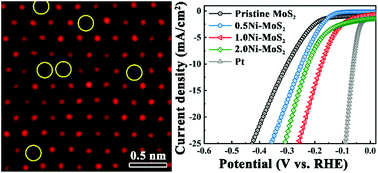
Nanoscale, 2019,11, 7123-7128
https://doi.org/10.1039/C8NR10023C
Binary and ternary Pt-based clusters grown in a plasma multimagnetron-based gas aggregation source: electrocatalytic evaluation towards glycerol oxidation
PtCuBi selective electrooxidation of glycerol to value-added chemicals.
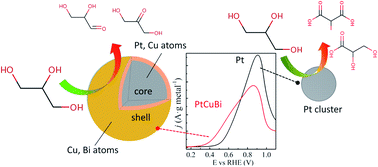
Nanoscale Adv., 2021,3, 1730-1740
https://doi.org/10.1039/D0NA01009J
Preparation of Cu cluster catalysts by simultaneous cooling–microwave heating: application in radical cascade annulation
The sub-1.5 nm Cu clusters are prepared through simultaneous cooling–microwave heating and employed for the synthesis of various polycycles.

Nanoscale Adv., 2021,3, 1087-1095
https://doi.org/10.1039/D0NA00980F
Rational design of bimetallic photocatalysts based on plasmonically-derived hot carriers
Boosting hot-electron extraction for photochemistry: triple role of surface morphology of SiO2–Au–Pt plasmonic hetero-nanostructures.

Nanoscale Adv., 2021,3, 767-780
https://doi.org/10.1039/D0NA00728E
Predicting ligand removal energetics in thiolate-protected nanoclusters from molecular complexes
Density Functional Theory (DFT) calculations reveal that ligand removal energetics in thiolate-protected nanoclusters can be accurately predicted through simple metal–thiolate complex calculations.

Nanoscale, 2021,13, 2034-2043
https://doi.org/10.1039/D0NR07839E
Towards the identification of the gold binding region within trypsin stabilized nanoclusters using microwave synthesis routes
Elucidating the location of stabilized nanoclusters within their protein hosts is an existing challenge towards the optimized development of functional protein-nanoclusters.
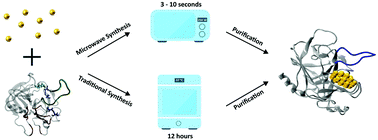
Nanoscale, 2021,13, 1061-1068
https://doi.org/10.1039/D0NR07068H
Size-controlled nanocrystals reveal spatial dependence and severity of nanoparticle coalescence and Ostwald ripening in sintering phenomena
Colloidal nanocrystals allow investigating sintering phenomena in supported catalysts.
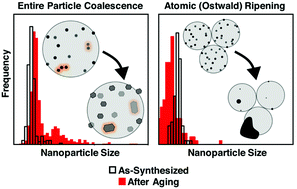
Nanoscale, 2021,13, 930-938
https://doi.org/10.1039/D0NR07960J
Dynamics of weak interactions in the ligand layer of meta-mercaptobenzoic acid protected gold nanoclusters Au68(m-MBA)32 and Au144(m-MBA)40
Interactive dynamics between ligand shell and atomically precise nanocluster define stability and open possibilities for catalytic reactions at unprotected sites.

Nanoscale, 2020,12, 23859-23868
https://doi.org/10.1039/D0NR07366K
A rational study on the geometric and electronic properties of single-atom catalysts for enhanced catalytic performance
We investigate the geometric and electronic properties of single-atom catalysts (SACs) for electrocatalytic CO2 reduction reaction (eCO2RR).

Nanoscale, 2020,12, 23206-23212
https://doi.org/10.1039/D0NR06006B
New gold standard: weakly capped infant Au nanoclusters with record high catalytic activity for 4-nitrophenol reduction and hydrogen generation from an ammonia borane–sodium borohydride mixture
Active sites are preserved in the citric acid-capped Au nanoclusters prepared in solid state. In water, the rapid dissolution of citric acid allows the reactants to easily access the active sites of infant Au nanoclusters leading to faster catalysis.

Nanoscale Adv., 2020,2, 5384-5395
https://doi.org/10.1039/D0NA00639D
Noble metal nanoclusters-decorated NiFe layered double hydroxide superstructure as nanoreactors for selective hydrogenation catalysis
The ability to conduct the self-assembly of nanometer-scale building blocks is the core issue in achieving “bottom-up” fabrications of desired superstructures.
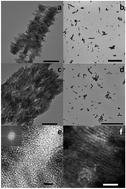
Nanoscale, 2020,12, 17780-17785
https://doi.org/10.1039/D0NR03007D
Enhancement of the performance of Pd nanoclusters confined within ultrathin silica layers for formic acid oxidation
Ultrasmall Pd nanoclusters confined within silica layers show high activity for formic acid oxidation with excellent stability.
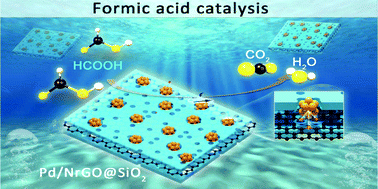
Nanoscale, 2020,12, 12891-12897
https://doi.org/10.1039/D0NR00307G
Gold nanoclusters cause selective light-driven biochemical catalysis in living nano-biohybrid organisms
We describe selective light-driven biochemical catalysis in living nano-biohybrid organisms made from different atomically-precise gold nanoclusters.

Nanoscale Adv., 2020,2, 2363-2370
https://doi.org/10.1039/D0NA00017E
Unraveling the single-atom electrocatalytic activity of transition metal-doped phosphorene
Single-atom catalysts based on transition metal-doped phosphorene feature excellent electrocatalytic activity towards ORR, OER and HER.
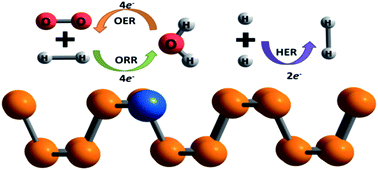
Nanoscale Adv., 2020,2, 2410-2421
https://doi.org/10.1039/D0NA00209G
Interstratified heterostructures of metal hydroxide nanoclusters and MoS2 monolayers with improved electrode performance
Interstratified 2D nanohybrids of chromium hydroxide–molybdenum disulfide with improved electrode functionality are synthesized by the self-assembly of anionic monolayered MoS2 nanosheets with cationic chromium hydroxide nanoclusters.
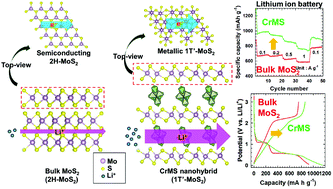
Nanoscale, 2020,12, 11759-11766
https://doi.org/10.1039/D0NR02569K
Interfacial synergy between dispersed Ru sub-nanoclusters and porous NiFe layered double hydroxide on accelerated overall water splitting by intermediate modulation
Benefitting from the desired potential-induced interfacial synergy, the Ru–NiFe LDH interfaces will convert to RuO2–NiFe(OOH)x interfaces to meet the requirements of an anode and cathode reaction, respectively.

Nanoscale, 2020,12, 9669-9679
https://doi.org/10.1039/D0NR01491E
NiAg0.4 3D porous nanoclusters with epitaxial interfaces exhibiting Pt like activity towards hydrogen evolution in alkaline medium
The Ni–Ag interface furnishes a reduced energy pathway for the enhanced hydrogen evolution reaction.
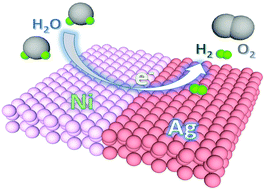
Nanoscale, 2020,12, 8432-8442
https://doi.org/10.1039/D0NR00993H
A platinum–nickel bimetallic nanocluster ensemble-on-polyaniline nanofilm for enhanced electrocatalytic oxidation of dopamine
Designed fabrication of flexible metal alloy nanocluster–polyaniline hybrid materials for efficient (bio)electrochemical applications.

Nanoscale, 2020,12, 6047-6056
https://doi.org/10.1039/C9NR09730A
A mechanistic insight into rhodium-doped gold clusters as a better hydrogenation catalyst
The reaction pathways of ethylene hydrogenation on pristine (Aun, n = 8 and 20) and rhodium-doped (AunRh) gold clusters are explored by DFT calculations.
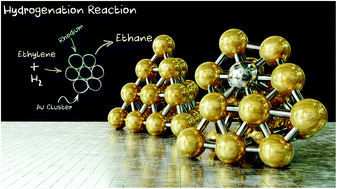
Nanoscale, 2020,12, 5125-5138
https://doi.org/10.1039/C9NR10258B
Theoretical screening of efficient single-atom catalysts for nitrogen fixation based on a defective BN monolayer
A single V atom anchored on h-BN exhibits outstanding catalytic activity for the NRR with a low onset potential of 0.25 V.
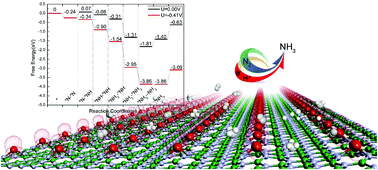
Nanoscale, 2020,12, 1541-1550
https://doi.org/10.1039/C9NR08969A
Metal single-atom coordinated graphitic carbon nitride as an efficient catalyst for CO oxidation
Metal single-atom coordinated graphitic carbon nitride exhibits excellent catalytic activity toward CO oxidation.

Nanoscale, 2020,12, 364-371
https://doi.org/10.1039/C9NR07726J
Ru nanoclusters confined in porous organic cages for catalytic hydrolysis of ammonia borane and tandem hydrogenation reaction
Ultrafine Ru nanoclusters were encapsulated in porous organic cages for catalytic hydrolysis of ammonia borane and tandem hydrogenation reactions.

Nanoscale, 2019,11, 21513-21521
https://doi.org/10.1039/C9NR08483E
Design of high-performance MoS2 edge supported single-metal atom bifunctional catalysts for overall water splitting via a simple equation
MoS2 edges exhibit good hydrogen evolution reaction (HER) activity but poor oxygen evolution reaction (OER) activity.
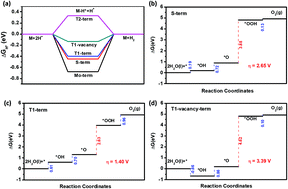
Nanoscale, 2019,11, 20228-20237
https://doi.org/10.1039/C9NR06083A
Computational screening of transition-metal single atom doped C9N4 monolayers as efficient electrocatalysts for water splitting
Ni@C9N4 performs as a promising bifunctional electrocatalyst with N and Ni atoms as the catalytic active sites for HER and OER, with calculated hydrogen adsorption Gibbs free energy (ΔGH*) of −0.04 eV and OER overpotential (ηOER) of 0.31 V.

Nanoscale, 2019,11, 18169-18175
https://doi.org/10.1039/C9NR05991A
One-core-atom loss in a gold nanocluster promotes hydroamination reaction of alkynes
Au24 without a core atom exhibits higher activity in the intramolecular hydroamination of alkynes than Au25 with the core atom.

Nanoscale, 2019,11, 13767-13772
https://doi.org/10.1039/C9NR04219A
Tailoring the stability, photocatalysis and photoluminescence properties of Au11 nanoclusters via doping engineering
Au8Ag3(PPh3)7Cl3 alloy nanoclusters with C3-axis Ag doping exhibit photothermodynamic and electrochemical stability improvements to afford photoluminescence and photocatalytic oxidation enhancement.

Nanoscale Adv., 2019,1, 2529-2536
https://doi.org/10.1039/C9NA00234K
Atmosphere-dependent stability and mobility of catalytic Pt single atoms and clusters on γ-Al2O3
Pt single atoms, stable on alumina under O2, form mobile clusters under H2, due to adsorbate- and nuclearity-dependent metal-support interaction.

Nanoscale, 2019,11, 6897-6904
https://doi.org/10.1039/C9NR01641D
Platinum single-atom adsorption on graphene: a density functional theory study
Single-atom catalysis, which utilizes single atoms as active sites, is one of promising ways to enhance the catalytic activity and to reduce the amount of precious metals used. Here by means of density functional theory based thermodynamics we show that the single platinum atoms preferentially adsorb on the substitutional carbon sites at the hydrogen terminated graphene edge.

Nanoscale Adv., 2019,1, 1165-1174
https://doi.org/10.1039/C8NA00236C
Ultra-small and recyclable zero-valent iron nanoclusters for rapid and highly efficient catalytic reduction of p-nitrophenol in water
Zero-valent iron nanoclusters with an ultrafine size have been prepared by a micelle-assisted process, and exhibit high catalytic activity and stability.

Nanoscale, 2019,11, 1000-1010
https://doi.org/10.1039/C8NR08302A
About this collection
Professor Manzhou Zhu (Anhui University, China), Associate Editor for Nanoscale and Nanoscale Advances, introduces his Editor’s Choice collection.
“Owing to their atomically precise structures and highly specific surface areas, continuing research on single-atom and nanocluster-based catalysts has been performed. This online themed collection focuses on single-atom and nanocluster catalysis, which is of major significance in elucidating catalytic mechanisms as well as investigating new types of high-efficiency catalysts. We hope that the readers find this themed collection informative and useful.”